Content
Pear is a southern fruit whose taste has been known since childhood. Thanks to the work of breeders, the fruit crop can now be found in cities with a warm and unstable climate. Zaveya pear is a new unpretentious variety that has gained great popularity among gardeners. Strengths and weaknesses, growing features, description of the Zaveya pear will allow you to understand why the variety is in demand among summer residents.
Description of the pear variety Zaveya
The Zaveya pear was bred by Belarusian scientists in 2016 by crossing the varieties Bere gray, Dulya Ostzeyskaya and Oil Rose. Zaveya is a winter, high-yielding variety that can withstand temperatures down to -30 °C without shelter.
The plant is medium-sized, grows up to 4 m in height. The Zaveya pear forms a pyramidal, sparse crown formed by light brown shoots. The curved branches bear dark emerald, glossy leaves of small size. In spring, during the flowering period, the crown is covered with numerous snow-white flowers. For abundant fruiting, the Zavea pear requires pollinating varieties that bloom at the same time.
Characteristics of pear fruits
The delicate green fruits of the Zaveya pear are truncated in shape and weighing 180 g and have juicy, aromatic pulp. The skin is thin but dense, due to which the crop is stored for a long time and can withstand long-term transportation. When properly stored, fruit retains its freshness and taste for 6 months.
Pros and cons of the Zaveya variety
The Zaveya pear, like any plant, has positive and negative qualities. The advantages of gardeners include:
- high and stable yield;
- good appearance and taste;
- long-term storage;
- frost resistance;
- the ability to grow in regions with an unstable climate.
Disadvantages of Zaveya pear:
- if the rules of care are not followed, diseases can quickly develop;
- does not grow well in clayey, heavy soil.
Optimal growing conditions
For good development and generous fruiting, you need to know where the pear tree likes to grow. The Zaveya pear prefers to grow on slightly acidic, fertile, light soil with a groundwater depth of at least 2 m.
A bright place, protected from drafts, is suitable for planting seedlings. Since the tree is medium-sized and does not like shading, the planting area must have sufficient area.
Planting and caring for the Zaveya pear
The area for planting pears is prepared in the fall. To do this, dig up the soil and apply organic and mineral fertilizers:
- when grown on loam when digging per 1 sq. m add 60 g of superphosphate, 6 kg of rotted compost or manure, 15 g of potassium;
- Humus and clay are added to sandy soil.
Before planting, you need to choose the right seedling. It is purchased from trusted suppliers, gardeners or nurseries.A healthy young plant should have well-developed roots and a healthy trunk without mechanical damage or signs of disease.
It is better to purchase Zavea pear seedlings when they are 1-2 years old. A young plant should have lateral branches from 12 to 30 cm long. They should be elastic, without growths and signs of disease. It is better to purchase seedlings with a closed root system, but if the roots are open, they are wrapped in a damp cloth during transportation.
Before planting, the root system of the pear is cut by 10 cm and kept in warm water for about 6 hours.
Landing rules
Zaveya pear is planted in the spring after the soil has warmed up and in the fall 3 weeks before the onset of frost. Spring planting does not provide 100% survival rate, since with the onset of warm weather the seedling begins to spend energy on bud opening, to the detriment of growing the root system.
A month before planting, prepare the planting hole. It should be 1 m in diameter and 0.5 m deep. The excavated soil is mixed with mineral fertilizers and organic matter and placed in a mound in the hole. The soil is spilled and left until the moisture is completely absorbed and the fertilizers are dissolved. Plants are planted at a distance of 5 m from each other.
The seedling's root system is straightened and placed on a mound. The hole is gradually filled with earth, compacting each layer so that an air cushion does not form. For a properly planted seedling, the root collar should be located 5 cm above the ground. Since the young plant is firmly planted in the ground only in the second year after planting, it needs support.
After planting the pears, the soil is spilled and mulched. Mulch will retain moisture, eliminate loosening and weeds, and also act as an additional organic fertilizer.
Zaveya pear is an unpretentious variety. For proper growth and development, it needs to be provided with regular watering, fertilizing and timely pruning.
Watering and fertilizing
An adult pear tree forms a powerful root system, so watering is carried out as the top layer of soil dries out. The young tree is watered weekly with 20 liters per specimen. The main rule of watering is to provide the tree with a large amount of water during the period of fruit formation and after leaf fall, when the plant is preparing for wintering. Watering is carried out in specially dug trenches around the trunk with a depth of 2 cm. After irrigation, the ditch is covered with nutrient soil and mulched.
If a young pear is planted in nutritious soil, it is not fed in the first year. Next, fertilize several times a season:
- in spring - nitrogenous fertilizers or organic matter;
- during the flowering and fruiting period, fertilize with nitroammophoska;
- after harvesting - phosphorus-potassium fertilizers.
Also, in early spring, before the buds open, foliar feeding is carried out. The tree is sprayed with a solution: 0.5 kg of urea is diluted in 10 liters of warm water.
Complex mineral fertilizers are applied annually, but organic matter should be applied no more than once every 3 years.
Trimming
To obtain a stable harvest, it is necessary to carry out annual formative, sanitary and rejuvenating pruning.
The crown of the Zaveya pear is formed over the course of 6 years.
- 1st year – remove the lower branches, the height of the trunk should be 40-50 cm from the ground. At a height of 90 cm from the headquarters, 3 branches are left on each side.They must be the same length, the excess ones are removed. The conductor is shortened by 1/3 of the length.
- 2nd year – remove growths that have appeared between the skeletal branches. The shoots that grew after the lower tier are shortened.
- 3rd year – form the 2nd tier. To do this, in the spring, before the buds on the upper stem branch of the lower tier swell, all growths to a height of 45 cm are removed under the ring. The branches of the second tier should be located between the spaces of the lower tier at a height of 25 cm so that they do not shade each other. The main shoots are shortened by 1/3 of the length, and the conductor is shortened by 20 cm.
- 4th year – the conductor is shortened to a side shoot to stop growth in height. The tree is pruned at a height of 50 cm from the trunk branch of the 2nd tier. All branches are cut to 1/3 of the length, and the growths between the tiers are removed under the ring.
- 5th year – the height of the Zaveya pear reaches 3.5-4 m. In order for the tree to stop growing, the conductor is cut off above the upper skeletal branch. In the formed crown, the 2nd order stem branches should be located 90 cm from the conductor and 0.5 m from each other.
Sanitary pruning of pears of the Zaveya variety is carried out in early spring before sap flow and in autumn, after leaf fall. To do this, remove damaged, dry branches, as well as those growing upward and at an acute angle to the trunk. Pruning is carried out strictly under the ring, since leaving a stump can contribute to the spread of rot.
Rejuvenating pruning is carried out if the tree has stopped producing large fruits. To do this, in the fall, a month before the onset of frost, the branches are cut to 40 cm in length. Pruning allows dormant buds to wake up and form new branches.It is also necessary to shorten the conductor on the side branch. This procedure will allow the tree to redistribute nutrients, renew the crown, resume fruiting and the quality of the harvest.
Whitewash
Whitewashing will protect the bark from the winter and spring sun. To do this, use lime diluted in warm water to form a thick kefir. To protect the plant, the trunk and eyelids of the lower tier are treated.
Preparing for winter
From the description it is clear that the Zaveya pear is a frost-resistant variety, so the adult plant does not need shelter. To prepare a tree for winter, it is watered generously, fertilized with phosphorus-potassium fertilizers, and the soil around the perimeter of the tree trunk is mulched with straw, pine cones, fallen leaves or sawdust.
A young plant, regardless of cold resistance, must be protected from frost. To do this, the tree trunk is tied with coniferous spruce branches.
Pollination
The Zaveya pear is a self-sterile variety, so it needs pollinators for a bountiful harvest. These varieties include: Bessemyanka and Lyubimitsa Yakovleva.
Fruiting of the variety occurs 4 years after planting. The Zaveya pear has one peculiarity: it itself controls the optimal number of fruits. When there is a lack of nutrients, it begins to discard excess crops. The fruits remaining on the tree grow large, juicy with few flaws.
Productivity
Zaveya pear is a high-yielding variety. With proper care, the first fruits are harvested in the fall, 4 years after planting. Productivity depends on climatic conditions and crop care. On average, up to 50 kg of fruit can be removed from an adult tree. In order for the fruits to last as long as possible, they are removed from the branch in an unripe form.
Diseases and pests
The Zaveya pear is immune to many diseases, but if not taken care of in a timely manner, scab and moniliosis may appear.
Scab - a fungal disease that affects leaves and fruits. Emerald spots appear on the leaf blade, which, without treatment, smoothly transfer to the fruit. You can save the tree by spraying with fungicides (Horus, Tridex, Merpan) or folk remedies (dry mustard, potassium permanganate or saline solution).
Moniliosis - rotting of fruits. When infected, 50% of the crop dies. The first symptom of the disease is the appearance of brown spots on undeveloped fruits. In dry and cold weather, the pear begins to mummify and turn black. Without treatment, the disease can spread to large, ripe fruits and manifest itself during storage and during long-term transportation.
To avoid problems, you must follow the rules of care and preventive measures:
- Regularly water, fertilize and prune.
- Cleaning up fallen leaves and rotten fruits.
- Removing weeds, loosening the tree trunk.
- Spring and autumn whitewashing of the trunk.
Reviews of Zaveya pear
Conclusion
If you study the description of the Zaveya pear, growing it will not be a troublesome task, but an exciting one. Since the variety is unpretentious, resistant to severe frosts and produces large, sweet fruits that can be used fresh or canned.
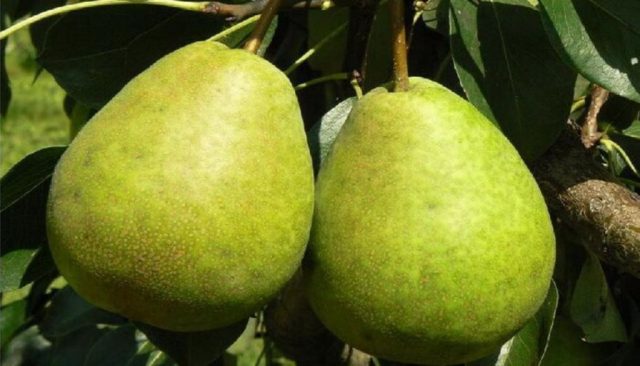
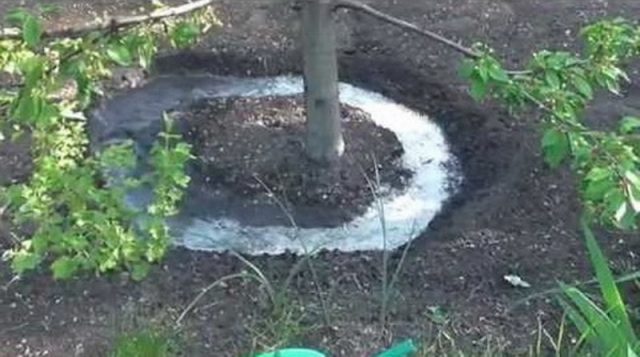
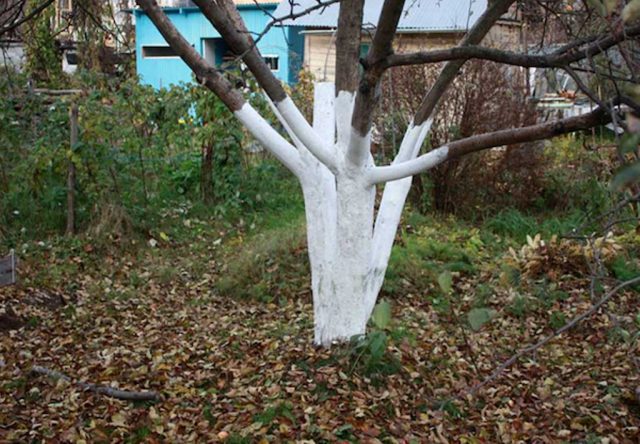
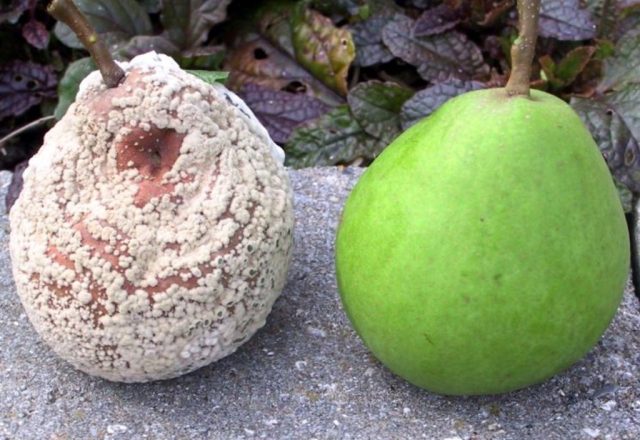
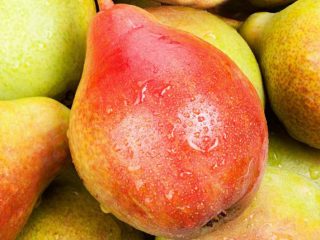
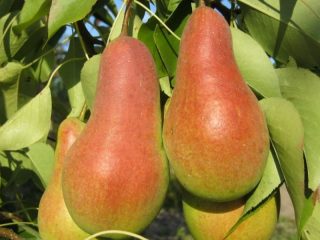
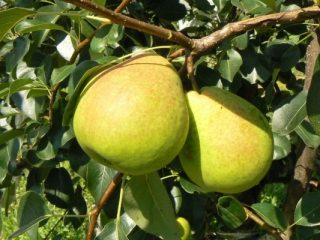
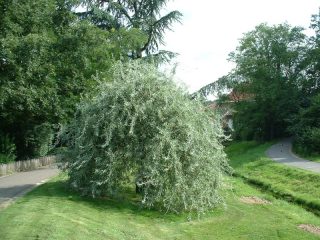
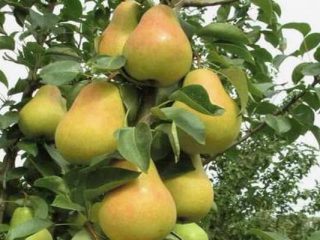
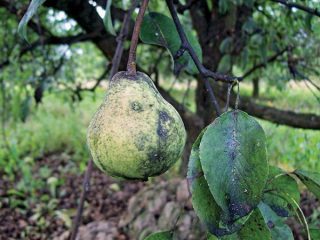
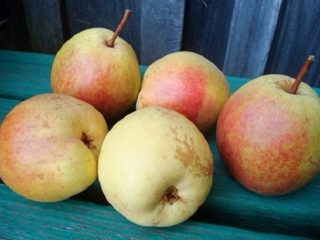
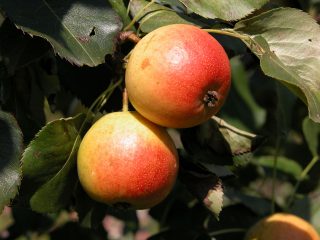
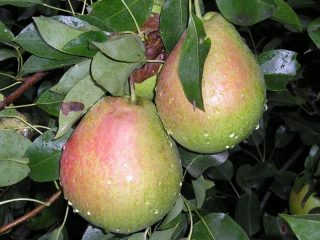
The article was clearly modest about yields of up to 50 kg per tree. This year my Zaveya produced 4 large boxes of fruit (more than 100 kg). I was wondering what to do with so much - obviously I couldn’t eat it myself. I tried to sell it - it goes away with a whistle, the presentation is no worse than that of imported ones.